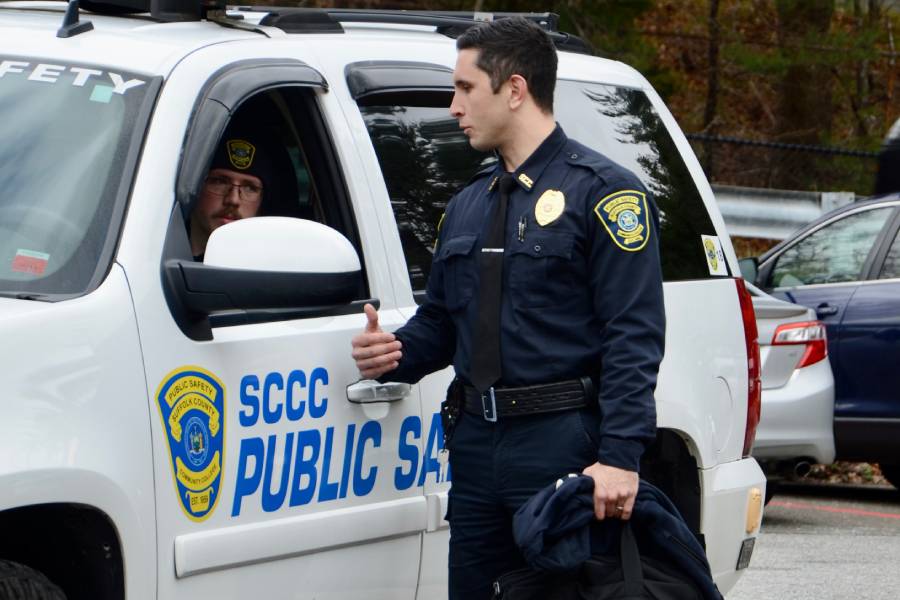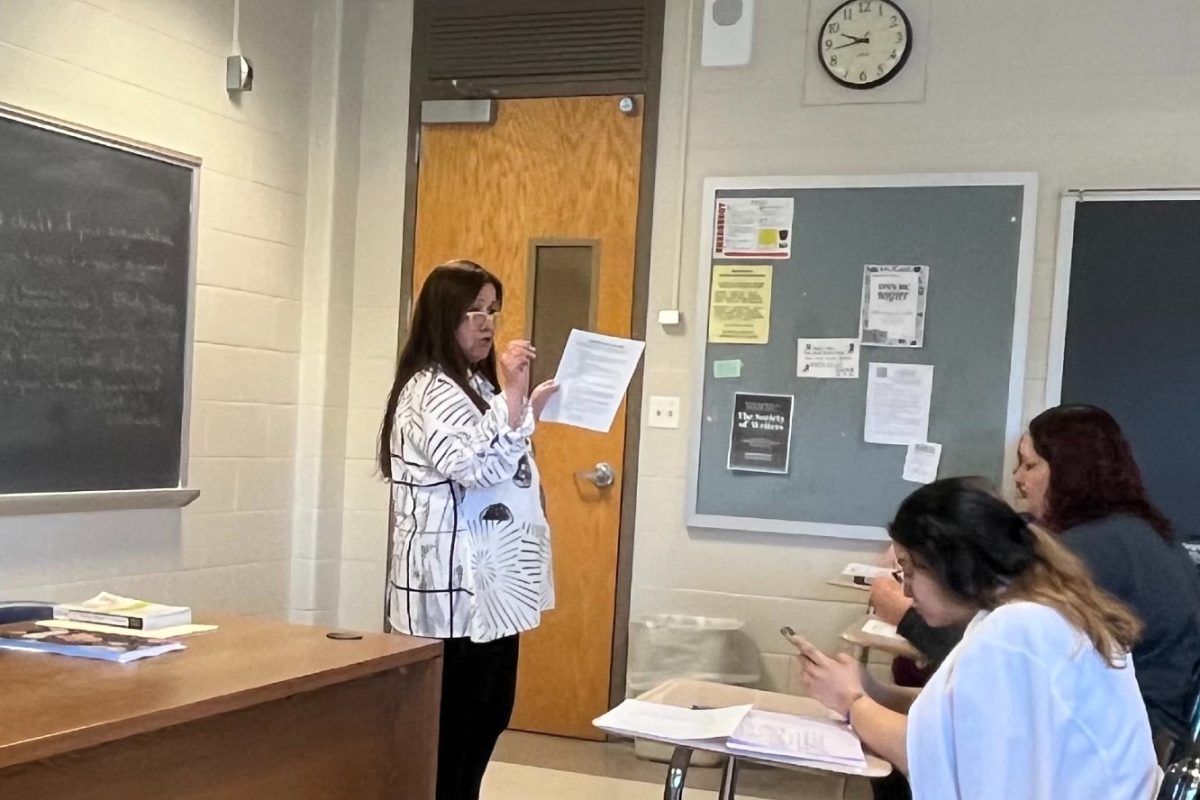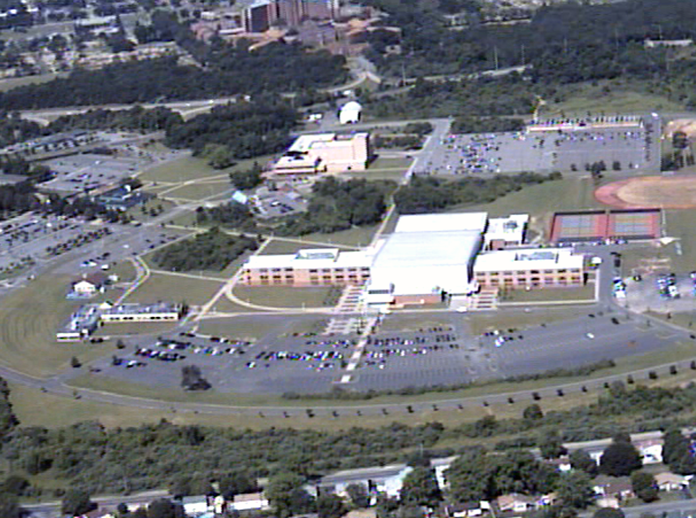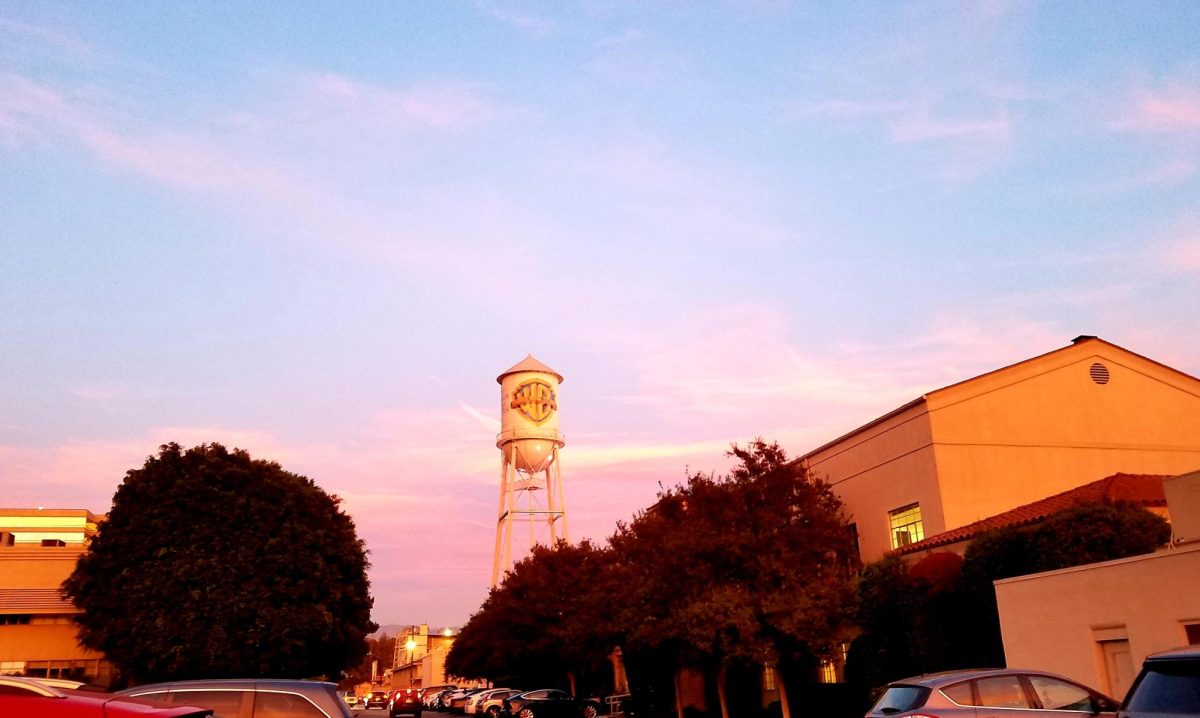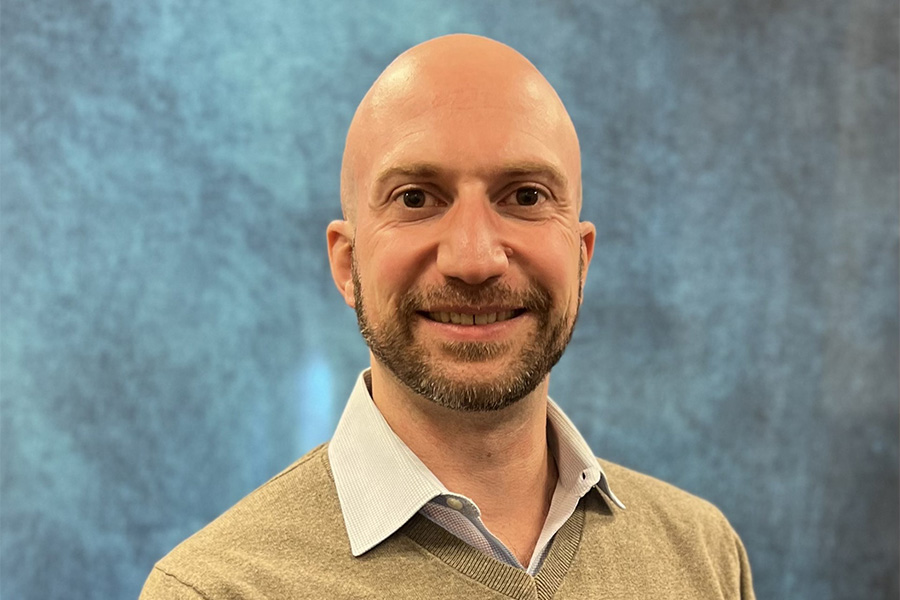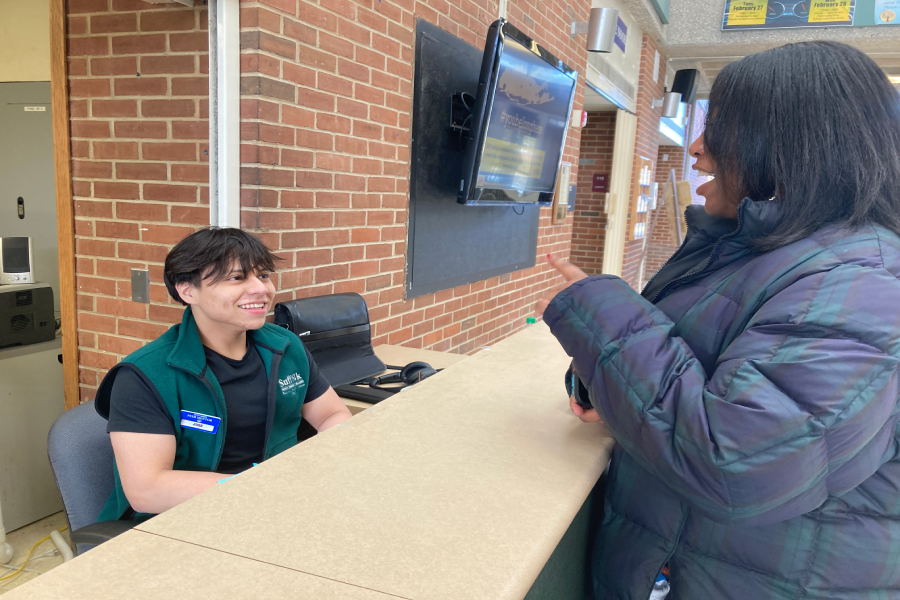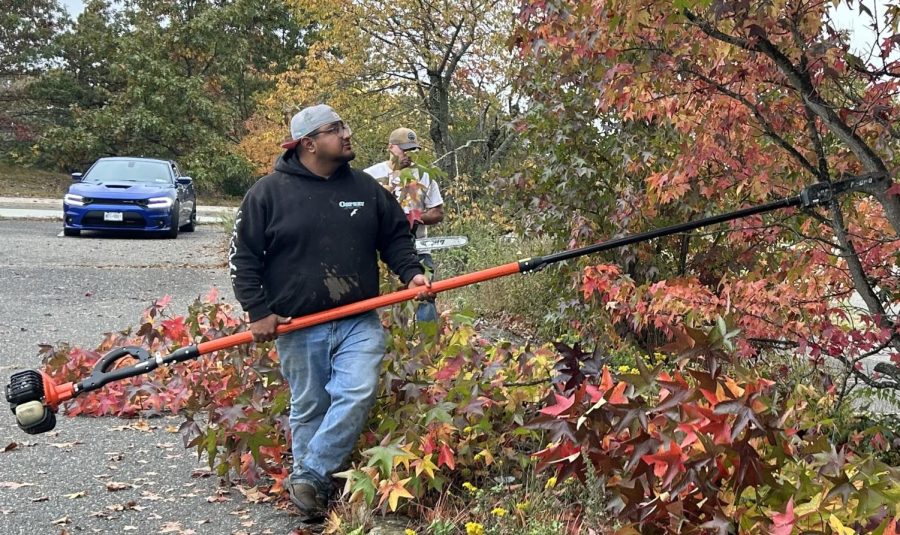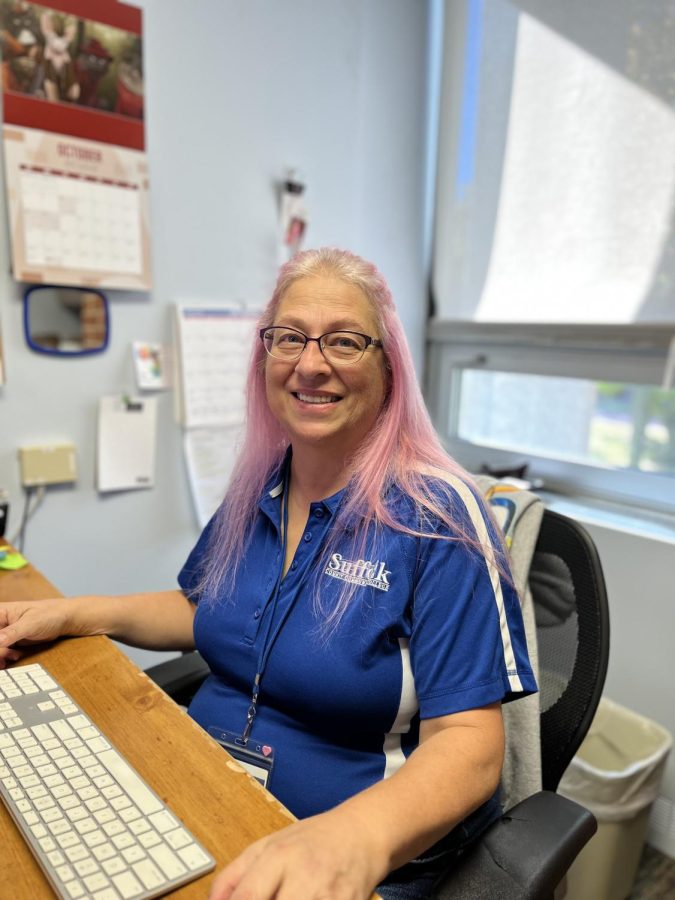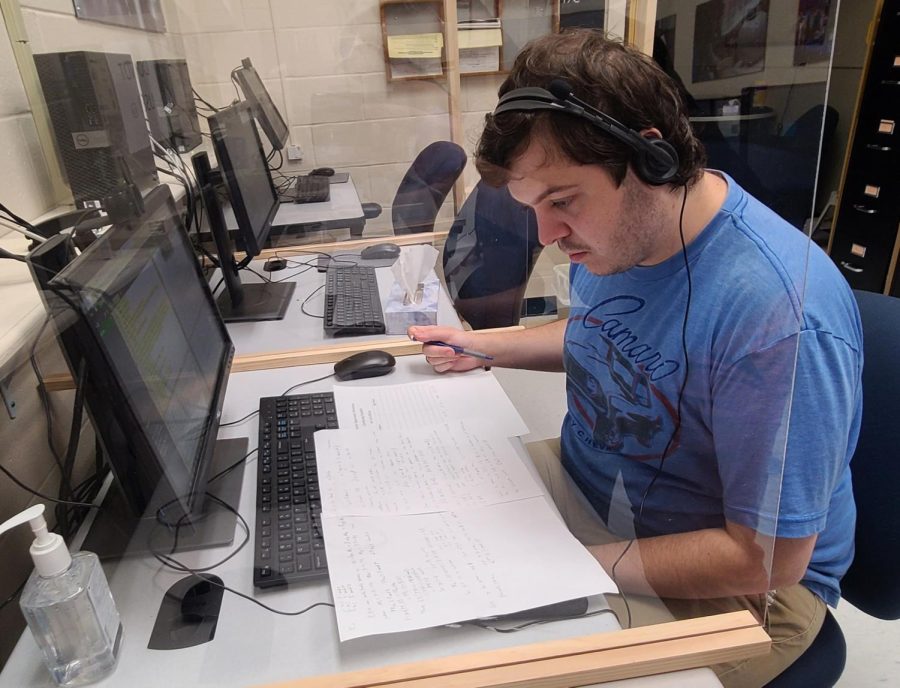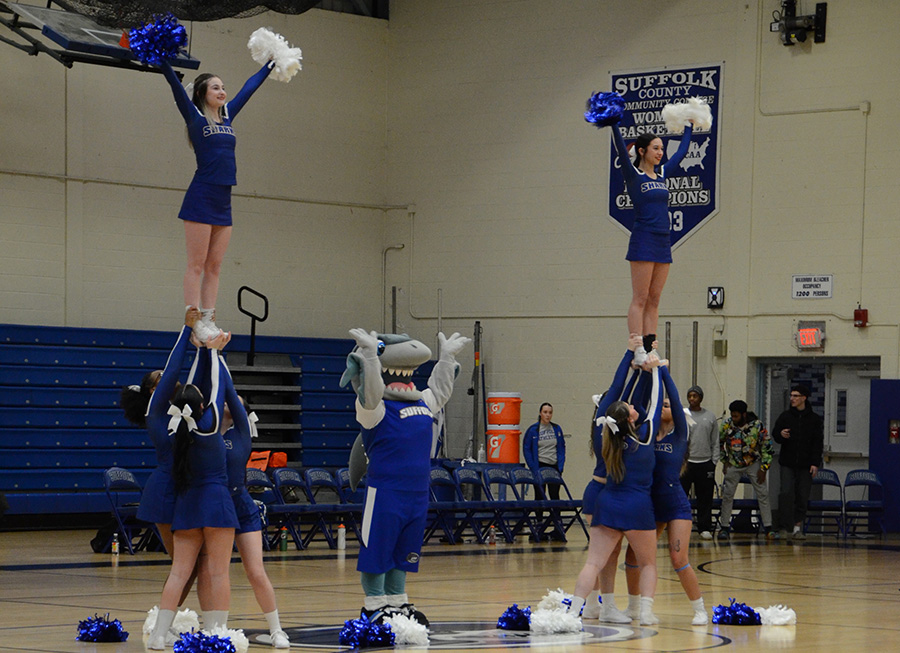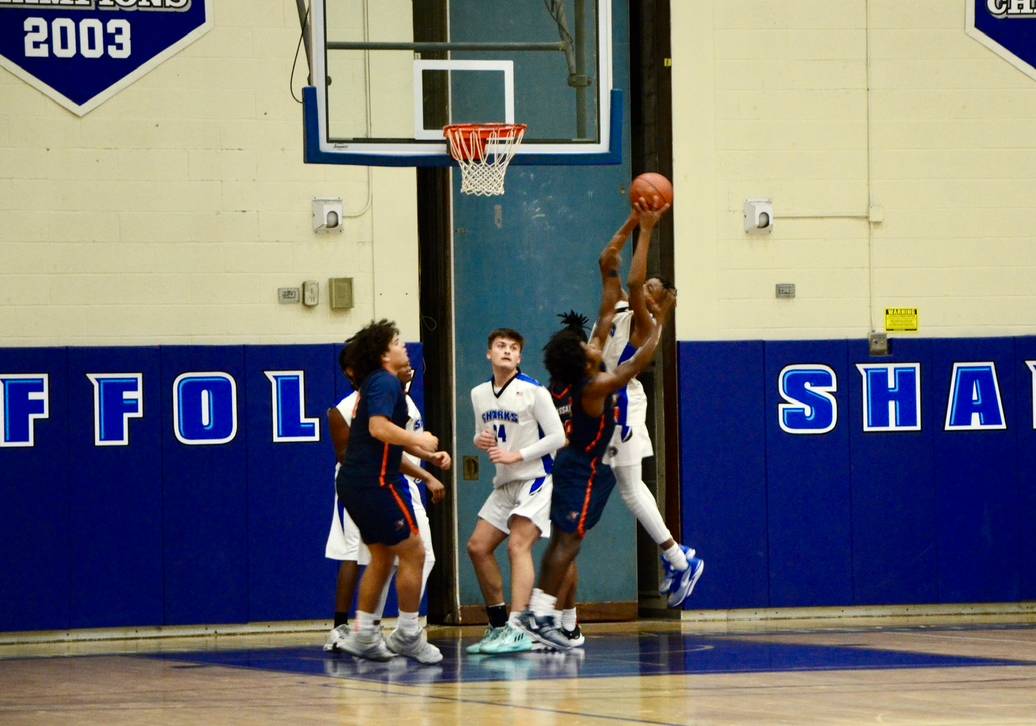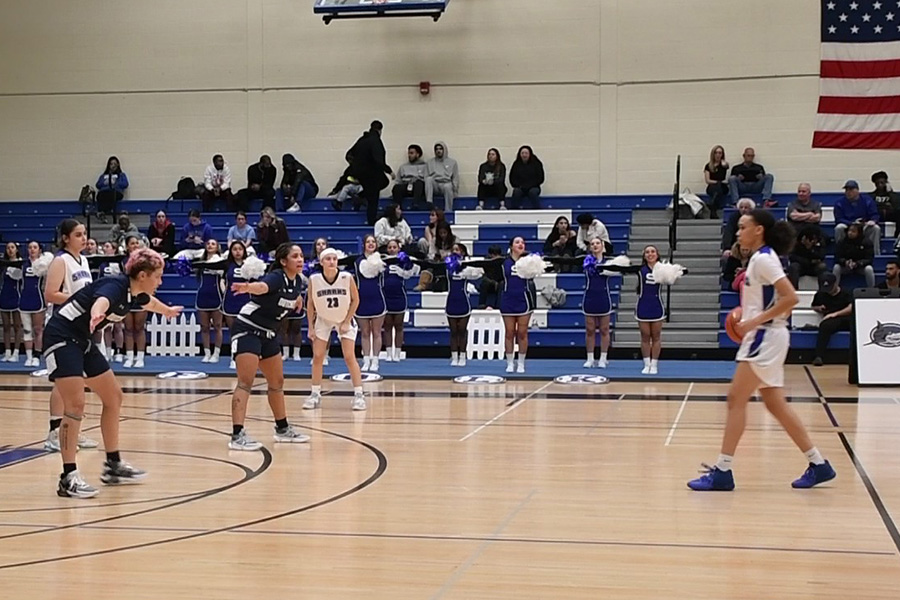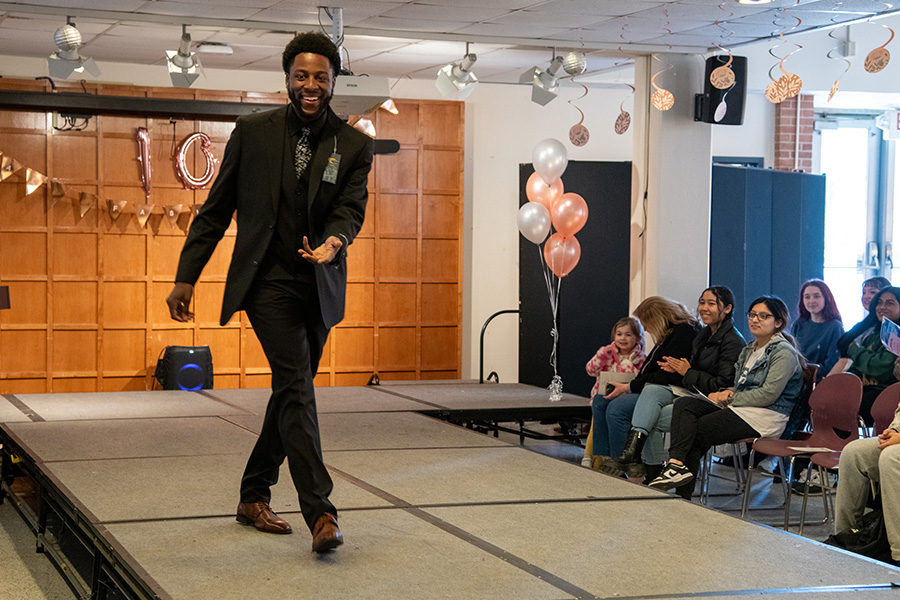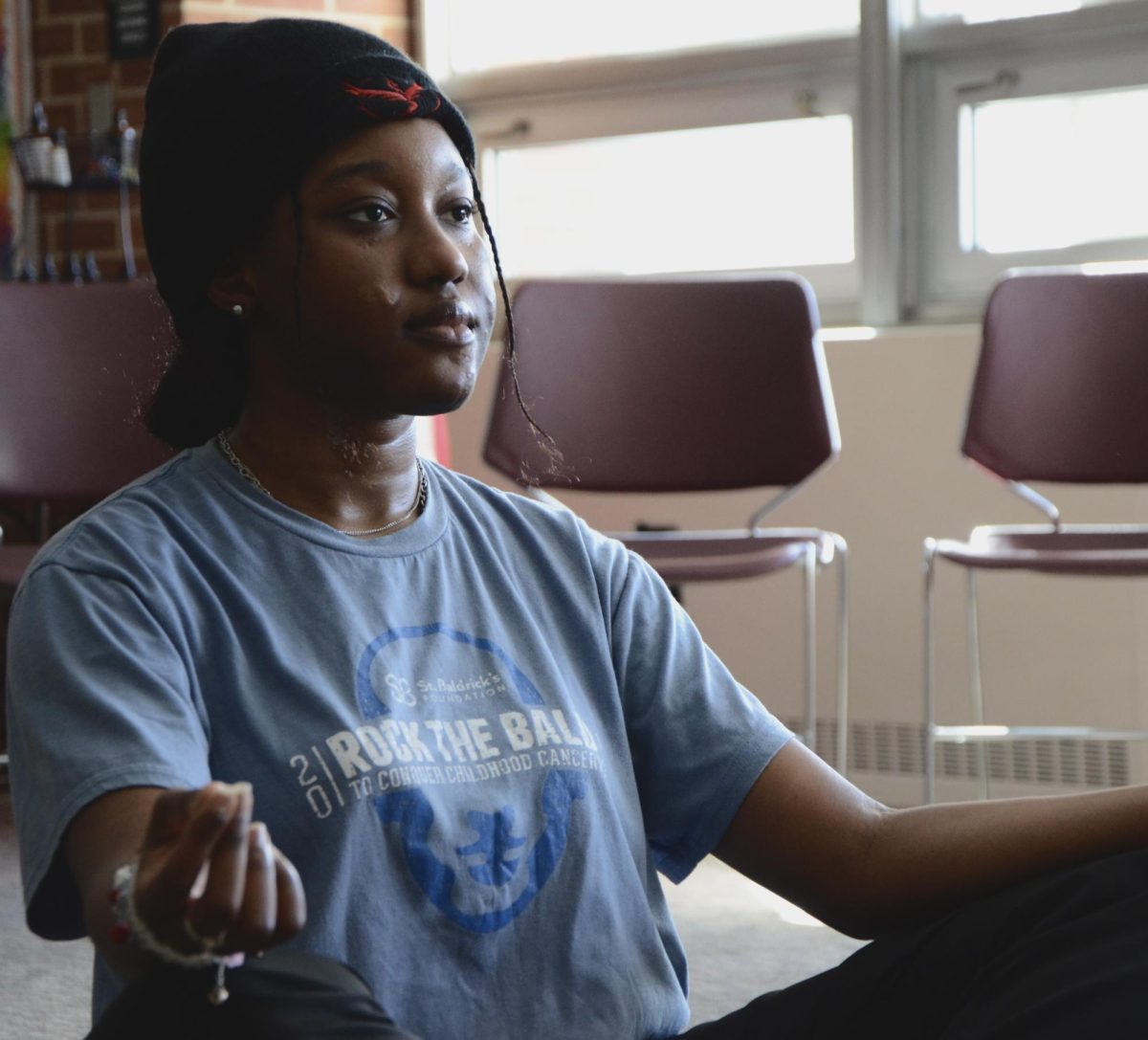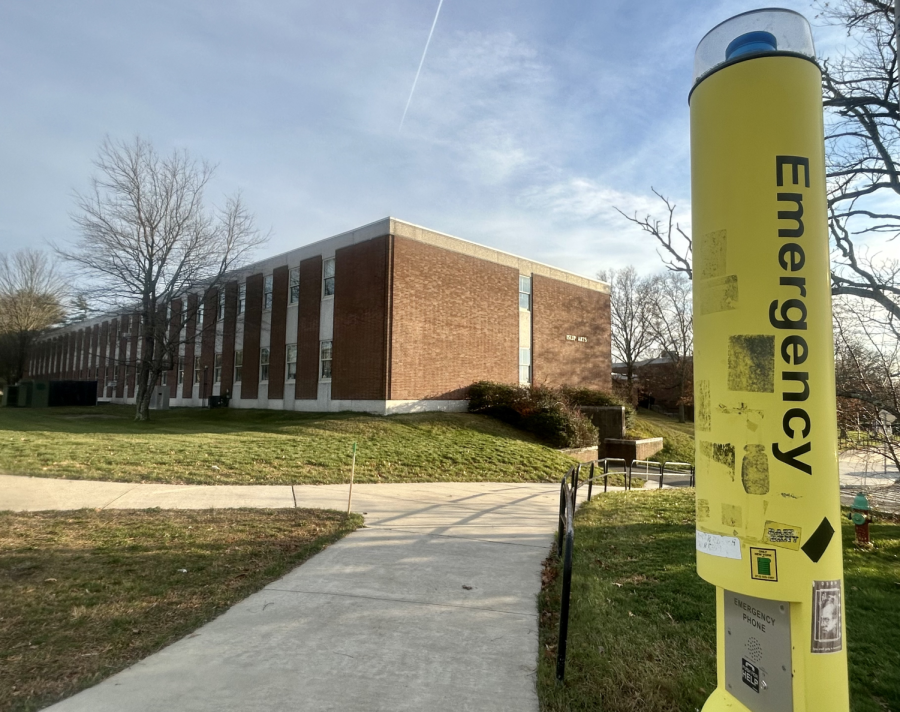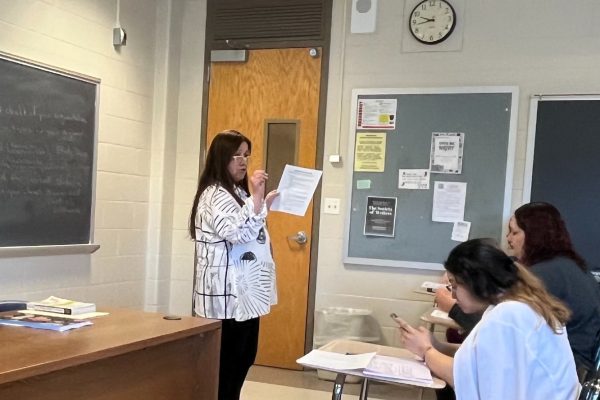SCCC Contemplates Fate of Blue Light Towers on Ammerman
A Blue Light Emergency Tower positioned on the path leading to the Islip Arts Building on Dec. 5, 2022. Blue Light Emergency Towers function as high visibility, weather-proof phones and became a common safety staple at colleges and universities across the U.S. after the Cleary Act was passed in 1986.
December 22, 2022
Suffolk County Community College is contemplating the fate of the 10 Blue Light Emergency Towers on the Ammerman campus, either planning to replace the aging machinery as it breaks or to remove them altogether.
Blue Light Emergency Towers are high-visibility, weatherproof emergency wireless phones that directly contact public safety or local law enforcement. According to Baycan Fideli, Suffolk’s director of public safety, at least two towers are currently inoperable due to wire corrosion from harsh weather conditions and difficulty finding the necessary parts to fix them.
“Storms cause them to corrode, and they break all the time. They take time to fix because the parts you need aren’t easy to come by because they’re considered old technology,” Fideli said. “As they die, we’re looking to possibly replace them and put them on the buildings, because then they are more protected from the weather. Then you have a hard-wired line with a blue light next to it and you can go to a building corner and make a phone call, and you don’t have to worry about corrosion or the wireless working. So that’s what we’re going to look at next.”
Blue Light Emergency Towers became a common safety staple at colleges and universities across the country after the Clery Act was passed in 1990 after the rape and murder of Jeanne Clery, a Lehigh university student, was raped and murdered in her dorm room.
The act requires higher education institutions to be transparent about crimes committed on campus and to issue timely warnings if a crime was committed and poses a serious or ongoing threat and also requires colleges and universities to have an emergency response system in place. Installing the towers was a solution for many campuses.
According to Fideli, the towers on the Ammerman campus are over 20 years old, although the year they were installed is unclear. Because it is a difficult and costly endeavor to locate the parts required to fix the aging machines, it is difficult for public safety to fix them promptly.
The last time a tower was used anywhere on any of the three Suffolk campuses was on Sept. 1, 2016, at the Michael J. Grant campus in Brentwood. According to Drew Biondo, Suffolk’s director of communications, in the last decade (from Dec. 8, 2012, to Dec. 8, 2022) only one call was made using a tower, which was the incident in 2016 and a request for assistance by someone who was locked out of their vehicle. This is likely due to the widespread use of cell phones and the availability of the Rave Guardian app.
“When you call us with the app, it tells us where you’re standing on our dispatch screen, and it also gives you a geolocation,” Fideli said. “And that’s better than a blue phone. Because now I know exactly where you are, and that’s a big plus.”
Students have differing opinions as to whether the towers are necessary on the Ammerman campus.
“They’re not really necessary. If someone is running from their life, they’re not like, ‘Oh, let me press this blue button, they’ll come to me,’ said Emily Vasak, a 22-year-old liberal arts major from Farmingville. “You have to keep running eventually to keep yourself safe. So they’re kind of useless if people have phones.”
Other students on the Ammerman campus, like Vincent D’onofrio, have a different view.
“I think we should have a few,” said D’onofrio, a 20-year-old Radio and Television major who asked his hometown not to be revealed. “Your phone might die, or you may not know the number for public safety, so I think they could be useful.”
It is unclear when the college plans to replace or remove the machinery, but according to Suffolk’s President Edward Bonahue, addressing the issue of the broken towers on campus is a high priority as more students are now on campus after the Covid-19 pandemic.
“In my view, we either need to have them up and running and be in good working order, or we need to remove them. The idea that we might give students a false sense that the opportunity is there to communicate is not acceptable. We always want to be able to ensure the safety of our students and our employees,” said Bonahue.
